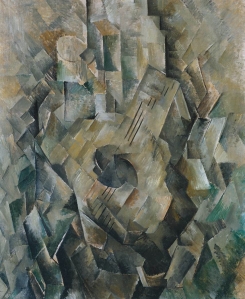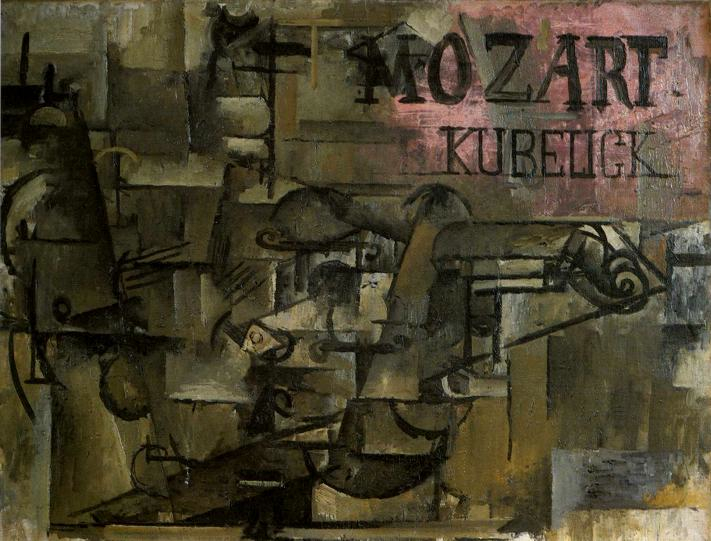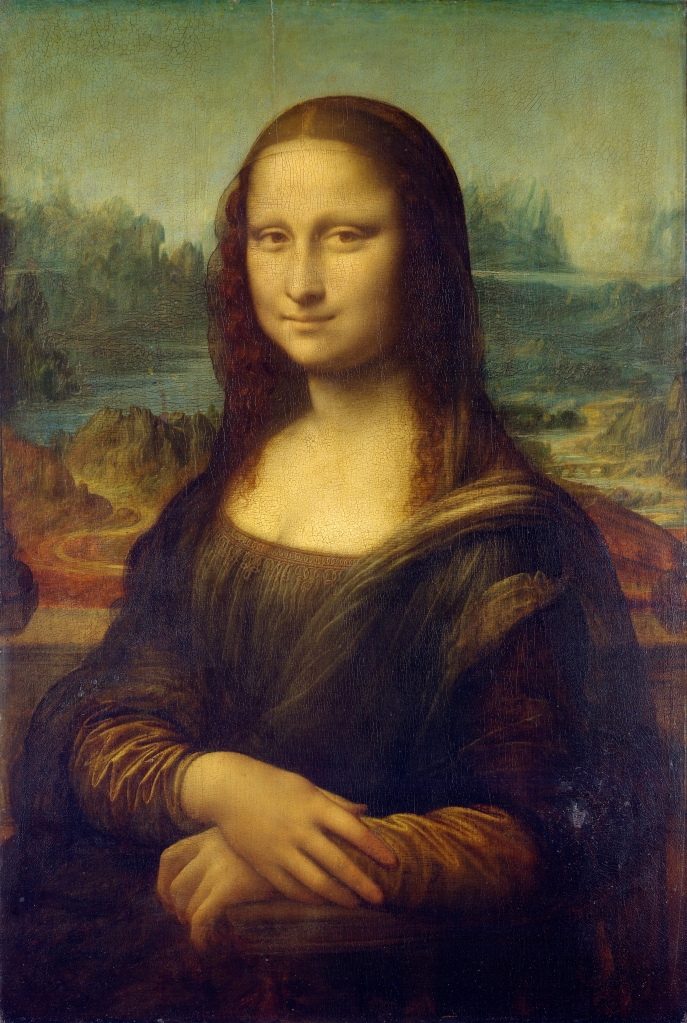* * *
In ‘The Life and Work of Félix Ravaisson’ (1904) Bergson praised da Vinci’s Mona Lisa as an example of artistic intuition (da Vinci’s experience of his model) in which the line, form and colour lead us ‘toward a virtual centre located behind the image.’1 By entering into or identifying with a character
‘out of that indivisible feeling, as from a spring, all the words, gestures and actions of the man would appear to me to flow naturally…The character would be given to me all at once, in its entirety…Symbols and points of view…place me outside him; they give me only what he has in common with others and not what belongs to him and to him alone…his essence cannot be perceived from without…nor be expressed by symbols…Coincidence with the person himself would alone give me the absolute. It is in this sense and in this sense only, that absolute in synonymous with perfection.’2
While an image cannot replace the intuition of duration, a mix of distinct but balanced images can work together to stimulate a viewer to make the necessary effort to achieve an intuition.
‘many different images, taken from quite different orders of things, will be able, through the convergence of their action, to direct consciousness to the precise point where this is a certain intuition to seize on. By choosing images as dissimilar as possible, any one of them will be prevented from usurping the place of the intuition it is instructed to call forth, since it would then be driven away at once by its rivals. By seeing that in spite of their differences in aspect they all demand of the mind the same kind of attention and, as it were, the same degree of tension, one will gradually accustom consciousness to a particular and definitely determined disposition, precisely the one it will have to adapt to…to produce the desired effort and, by itself, arrive at the intuition.’3

Georges Braque, 1910, La guitare (Mandora, La Mandore) oil on canvas, Tate Modern, London (Image, Wikipedia)
The ‘austere’ and subtle use of tonality by Picasso and Braque in their so-called Analytic Cubism (and less capably by other Cubists) may derive from Bergson’s philosophy in order to not only focus the viewer’s attention on geometric form and space but to convey interpenetration and the ‘greyness’ of duration.
‘philosophy consists precisely in this, that by an effort of intuition one places oneself within that concrete reality, of which the Critique (of Pure Reason) takes from without the two opposed views, thesis and antithesis. I could never imagine how black and white interpenetrate if I had never seen grey; but once I have seen grey I easily understand how it can be considered from two points of view, that of white and that of black.’4
For Bergson, artistic practice ‘aims at impressing feelings on us rather than expressing them (my emphases), it suggests them to us, and willingly dispenses with the imitation of nature when it finds some more efficacious means.’5 The artist aims at sharing his emotion with the viewer ‘so rich, so personal, so novel and at enabling us to experience what he cannot make us understand.’6 Bergson regarded emotion as transcendent. As Deleuze wrote, it ‘is like the God in us.’7
‘emotion is creative (first because it expresses the “whole of creation, then because it creates the work in which it is expressed; and finally because it communicates a little of this creativity to spectators or hearers.’8
Consider the use of musical instruments and notation in Cubist art, in the light of Bergson’s words
‘When music cries, it is humanity, it is the whole of nature which cries with it. Truly speaking, it does not introduce these feelings in us; it introduces us rather into them, like the passers-by that might be nudged in a dance.’9

Georges Braque, 1912, The Violin (Mozart-kubelick), oil on canvas, private collection, Basel, Switzerland (Image, Wikipedia)
For Bergson, this creative emotion is precisely a cosmic Memory that liberates man from ‘mere’ duration in order to make him a creator, through whom flows the whole movement of creation.10
‘This liberation, this embodiment of cosmic memory in creative emotions, undoubtedly only takes place in privileged souls. It leaps from one soul to another…(and) it traces the design of an open society, a society of creators’11
Part twelve/to be continued…
Notes
1. In ‘Bergson and Cubism: A Reassessment’, op. cit., 345 ↩
2. An Introduction to Metaphysics, op. cit., 22 ↩
3. From An Introduction to Metaphysics in ‘Bergson and Cubism: A Reassessment’, op. cit., 345. Cf. the use of lettering etc. by the Cubists. ↩
4. An Introduction to Metaphysics, op. cit., 60. A critic wrote less specifically, ‘The “gravity” of intuitive emotion caused them (the Cubists) to subordinate colour to form’ , in Inventing Bergson, op. cit., 31. ↩
5. Time and Free Will, op. cit., 16. Very important to cf. Bergson on this point with Plotinus on the function of the emotions. Also, to impress feelings rather than to express them suggests the notion of the artist seeking to control the viewer’s response. Cf. Republic. ↩
6. ‘Bergson and Cubism: A Reassessment’, op. cit., 343. ↩
7. Bergsonism, op. cit., 110. ↩
8. Ibid. ↩
9. Ibid. ↩
10. In The Two Sources of Morality and Religion, Trans., Audra and Brereton, 1935. Bergson wrote ‘create creators’ 243. ↩
11. Bergsonism, op. cit., 111 ↩
